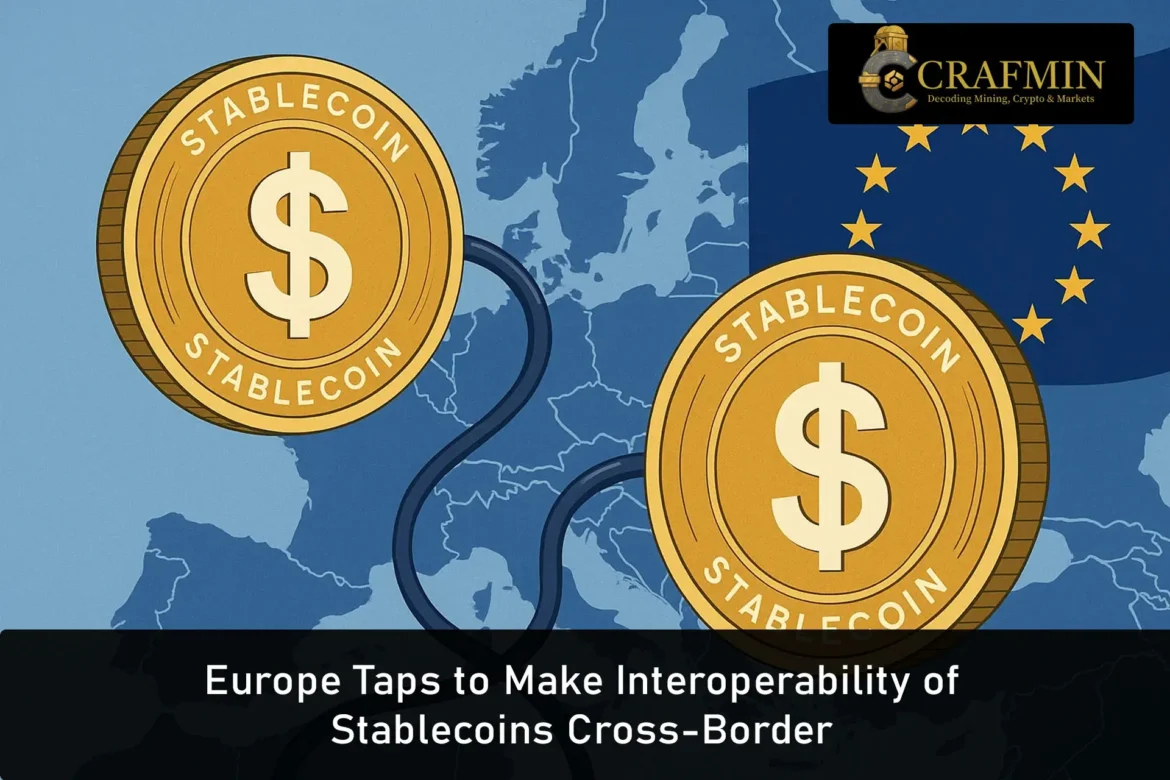The European Commission is moving fast to transform digital payments. In a significant regulatory move, the EU has aimed to make stablecoins authorized under the Markets in Crypto-Assets (MiCA) regime interoperable with those issued outside its territories.
This is at a time when Europe is putting the stage for it to spearhead efforts towards cross-border seamless digital finance—a change that may re-write the application of stablecoins globally.
EU to Enable Global Stablecoin Interoperability!
New MiCA guidance allows EU-licensed stablecoins (e.g., #EURC) to be 1:1 interchangeable with their non-EU subsidiaries’ equivalents (e.g., offshore #USDC).
Stablecoin Expansion:
• Bridges EU & global liquidity pools
•…— Starbase (@starbaseacc) June 26, 2025
Why It Matters
The push for interoperability translates to stablecoins such as USDC or Tether—previously limited to their respective environments—potentially operating in harmony with EU-issued digital currencies in the near future. The new paradigm guarantees reduced transaction friction, simpler user experience, and a more unified crypto market.
For businesses, this promises faster, cheaper payments across borders. For consumers, it’s choice and convenience. And for the European economy, it’s a strategic move toward dominating a larger share of the world’s crypto infrastructure.
Timing Is Everything
With MiCA having recently come into effect, the EU is not waiting to set up its framework. Global adoption of stablecoins is increasing, and this interoperability move is an open sign of a willingness to move now—when the space remains young.
Instead of waiting and seeing like some other places, the EU is placing its bets on open regulation to fuel innovation. The goal? To create a secure, scalable, and open crypto environment.
How Interoperability Will Work
The term “interoperable” might sound buzzword-y but the idea is simple. Imagine being able to be paid in USDC in Paris and it settle in its own manner into an EU-regulated stablecoin instantly, without delay or middleman.
Behind the scenes, the EU is building bridges: technical standards, compliance tools, and settlement mechanisms that allow different stablecoins to coexist within one place. That helps solve one of crypto’s biggest issues—fragmentation—where different coins are in individual silos.
Europe now wants to put those silos all together in one integrated system.
Global Coins Welcome—If They Play by the Rules
Notably, this rule does not ban foreign players. In fact, the EU is embracing non-EU stablecoins into the fold, provided they meet the region’s transparency, reserve, and consumer protection standards.
Europe is not building walls but, rather, raising the bar and extending an invitation to others to climb aboard.
This can pressure big issuers like Tether and Circle to get their stablecoins into compliance—solely to remain competitive in the European market. It introduces CBDCs and soon-to-be-created coins from Asia, Africa, or the Americas to enter in as well.
Verdant Europe is redefining agricultural investment with the APFC Coin — combining the reliability of farmland with the accessibility of tokenized finance.
This model opens the door to global participation in a historically stable asset class — now fully digital.
Real land.… pic.twitter.com/pFgoq3mzWy
— APF Digital Agrifund (@APF_Digital) July 4, 2025
Ripple Effects Beyond the EU
The benefits of this step don’t end at the 27-member cluster. Global economies in Africa and Latin America, where remittances are regularly sent via stablecoins and safety from inflation is desired, could tap EU-regulated rails for more secure, faster payments.
Asian technology companies may be racing to pair their stablecoins with European protocols, reaching further. And crypto startups and DeFi platforms may regard the EU as a regulatory refuge and gateway to international access.
By setting the first sincere framework for stablecoin interoperability, Europe could be spurring a wave of innovation worldwide.
Boost to the Crypto Industry
For many years, the crypto world sat in a legal grey area. Regulation is said to be a downer on innovation, but more and more industry thought now sees it as a foundation for trust.
As Lena K., a compliance strategist for a leading EU-headquartered fintech firm, says:
“Interoperability under regulation is exactly what we need today. The world of crypto is evolving—and regulations like this enable it to mature up without putting out the spark.”
Trust, transparency, and efficiency—that’s what builds a healthy digital finance ecosystem. This new EU regulation hones all three.
Can Other Countries Keep Up?
As the EU is galloping ahead, the US is stuck in domestic disharmony about crypto policy. Other regions like Southeast Asia have progressed but lack a cohesive strategy. Europe, on the other hand, is becoming the model of innovation with order.
If this interoperability plan of stablecoins succeeds, it can be a global standard. Others will emulate it—or link to it.
The result? A more connected, resilient, and vibrant global stablecoin system.
Takeaway: This Changes Everything
Stablecoins are no longer just DeFi developers’ or traders’ utilities. They’re becoming the essential infrastructure for future money—from e-commerce to payroll to remittances.
The EU’s interoperability project is a watershed moment. It creates a platform in which digital currencies of differing jurisdictions can swap with safety, in real-time, and at scale.
When the shift begins next months, crypto users and ordinary consumers must pay close attention. Whether creating fintech products in Tallinn or sending money to family in Nairobi, this transformation may radically alter the way you depend on—and trust—digital currencies.

